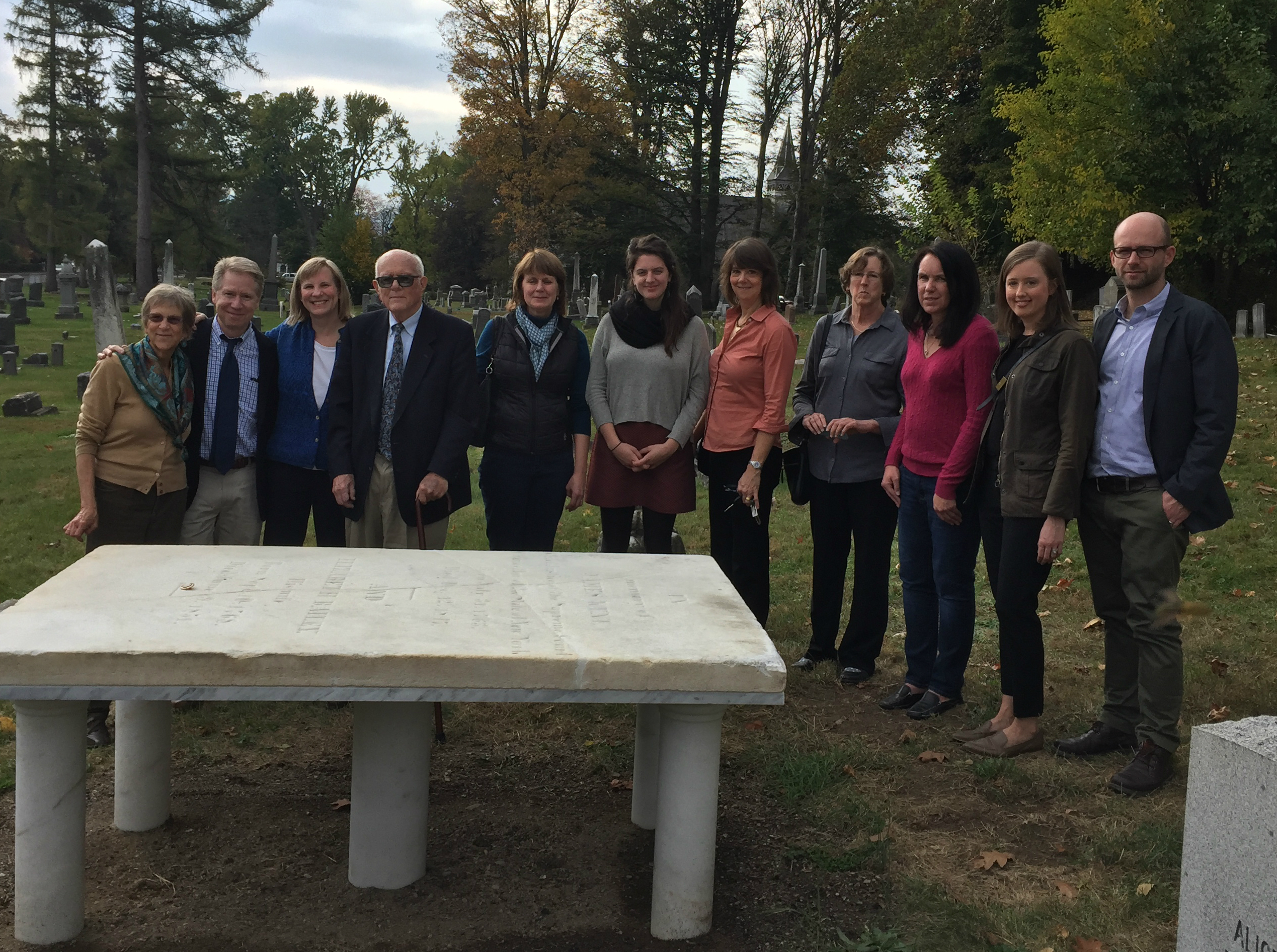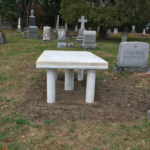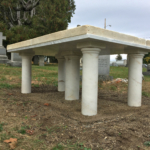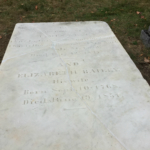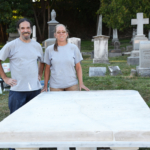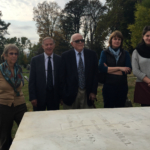This article was written by Robert Murphy, president of the Beacon Historical Society.
Photo: Descendants of Chancellor James Kent standing before his restored gravestone at a ceremony, presented by The Historical Society of the New York Courts and the Beacon Historical Society, which took place on October 30th, 2016 at St. Luke’s Episcopal Church, Beacon, NY.
(L-R): Mary V. Turner Cattan (4th Generation); Harry Boers; Anne Turner (5th Generation); Kent Turner (4th Generation); Katharine Turner Berger (5th Generation); Elizabeth Berger (6th Generation); Deborah Smith (5th Generation); Ellen Turner; Jean Shea (5th Generation); Amy Turner (6th Generation); Ryan Miller
Attending the unveiling of the Kent Gravestone, along with the Kent family and representatives of the Beacon Historical Society, were the staff of The Historical Society of the New York Courts, Marilyn Marcus, Executive Director, Daniel O. Sierra, Marketing Director, and Allison Morey, Administrative Director; the President of the Society, Hon. Albert M. Rosenblatt; and Society Trustees Hon. Helen Freedman and Frances Murray.
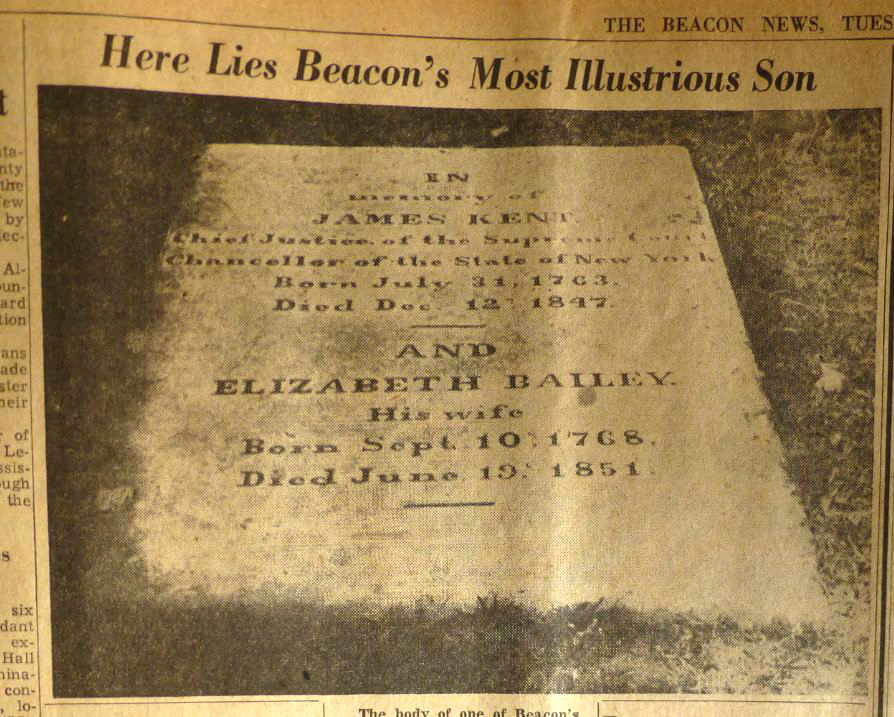
“Here Lies Beacon’s Most Illustrious Son” reads the headline over the photo of a gravestone in a 1939 edition of Beacon’s (New York) local newspaper. The headline was referring to James Kent, the eminent jurist and the former Chancellor of New York, and most famously, “the American Blackstone” — author of the seminal nineteenth-century law literary work, Commentaries on American Law. The newspaper lamented back in 1939 (about ninety years after his death) that Kent and his legacy had all but been forgotten by local townspeople, as evidenced by the toppling of his large, marble table top stone that even then was sinking into the sod.
Speed forward to 2013, and the headline might read: “James Kent — Buried, Forgotten and Missing”… for by that date his stone had disappeared, covered over by the grasses of St. Luke’s Church Cemetery. The year 2013 also happened to be the city of Beacon’s centennial, and the Beacon Historical Society’s cemetery committee, spurred on by the 1939 news photo of Kent’s stone, was determined this was the opportune time to find the missing grave of our city’s most Illustrious Son.
How did James Kent happen to be buried in Beacon, New York? Contemporary accounts tell us that Chancellor Kent’s funeral took place on the 15th of December in 1847, with his internment in New York City’s Marble Cemetery following an “immense procession, consisting of Judges of our local courts, and leading members of the Bar,” according to the New York Herald. At Marble Cemetery, Kent’s body and, four years later, the remains of his wife Elizabeth Bailey, were placed in the family vault to rest there for eternity, it would seem. But the Kent connection, and the Chancellor’s eventual removal to Beacon, began in 1853, the year Judge William Kent, the Chancellor’s only son, bought “Beaconside,” his summer estate in Matteawan (now Beacon). And from the windows of Beaconside an easy view of St. Luke’s Church was to be had.

St. Luke’s Episcopal Church was designed by noted architect Frederick Clarke Withers just after the Civil War, and its grounds were laid out by its most wealthy and famous summer parishioner, Henry Winthrop Sargent, a pioneer horticulturalist and landscape gardener from Boston. Here in the village of Matteawan, in the newly adopted home of son, Chancellor Kent and his wife were to be reinterred about 25 years after his death in the beautifully landscaped setting of St. Luke’s Cemetery. In a letter written in 1873 by the church’s rector, the Rev. Henry E. Duncan, we learn of the Kent family plot:
It is a quiet burying-ground, near the village, though, removed from the bustle and noise of the community, and removed only the fourth of a mile from the foot of the somber mountains. Our beautiful stone church is only a few rods from his grave, the villagers pass on a Sunday morning along the path which conducts by grave to the north door of the edifice. The spot is retired, planted with evergreens—all that one could wish for a last home when the business of life was ended.
Chancellor Kent’s gravestone was large marble slab supported at the corners by four upright marble posts. The stone’s carving reads:
In
Memory of
JAMES KENT,
Chief Justice of the Supreme Court
Chancellor of the State of New York
Born July 31, 1763
Died Dec. 12, 1847
_______
and
ELIZABETH BAILEY
his wife
Born Sept. 10, 1768
Died June 19 1851.
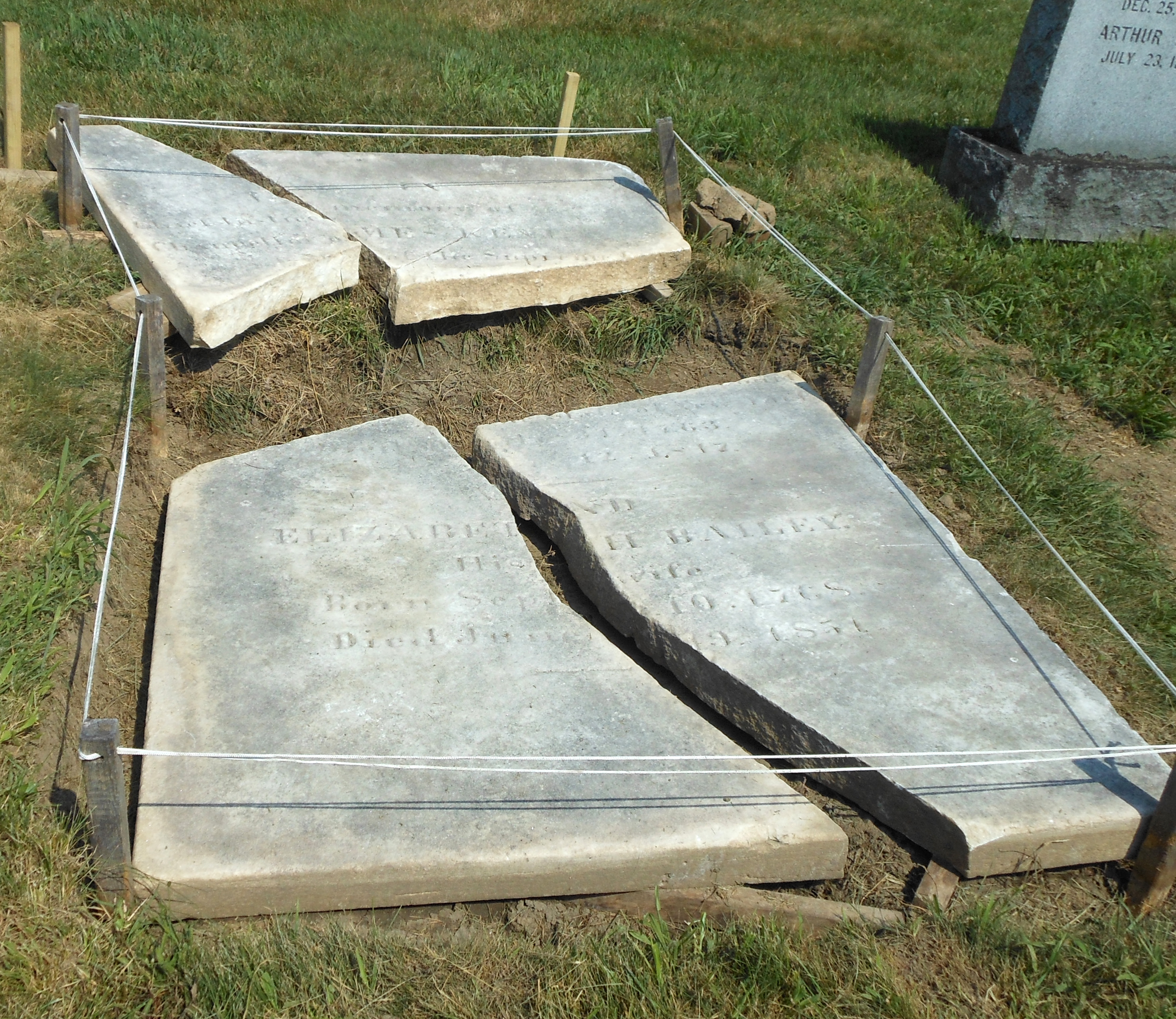
The Beacon Historical Society’s task was to discover where this monumental marble table top stone — swallowed up sometime during the second half of the twentieth century — now lay buried in St. Luke’s Cemetery. The Society’s chairperson Mary Colbert made the discovery of the stone while on her hands and knees, pulling away tufts of grass not far Judge William Kent’s marker. The Chancellor’s stone was fully covered by grass. Now unearthed, the stone was found to be broken in four pieces. Its marble legs nowhere to be found. A major (and expensive) restoration undertaking would be needed. Colbert proceeded on the exhaustive journey of contacting gravestone restoration experts for estimates. Descendants of the Chancellor were brought on board to provide most of the financial backing of the project through the good offices and perseverance of the Hon. Albert M. Rosenblatt, president of the Historical Society of the New York Courts. Altogether the arduous process took several years to complete. Finally by 2015, the money was raised by the Kent family and others, and the conservationist artisans chosen. Work began in the summer of 2016.

Historic Gravestone Services of New Salem, Massachusetts, had been selected to restore Chancellor Kent’s stone. This restoration firm consisted of the wife-husband team of Ta Mara and Ricardo Conde. Both had an extensive resume of repairing historic stones in the New England area, and the couple had years of working and teaching experience in the field. The work would be done in phases and would entail four day-long trips from Massachusetts to Beacon. First, the four broken pieces of the Kent stone had to be secured and cleaned. Next, the gravesite had to be excavated and a concrete foundation poured and set. Then four recreated legs of marble were mortared to the base. These legs supported a marble slab which was to hold the original gravestone. Finally, the four pieces were placed on its support and glued together with a special marble epoxy. On September 12, 2016, restoration work on the Chancellor Kent stone was complete, the gravesite now looking as it must have when Reverend Duncan spoke words there in commemoration of Chancellor Kent some 140 years ago.
In a letter written in 1828, Chancellor James Kent reminisced about growing up in what was then Dutchess County, New York: “As I was born and nourished in my boyish days among the Highlands east of the Hudson, I have always loved wild and rural scenery; and the sight of mountains, hills, woods and streams, always enchanted me, and does still.” In retrospect, it is most fitting that the Kent family chose this cemetery, located in the shadows of Mount Beacon, the Highland’s tallest and most historic peak, for the final resting place of the Chancellor.

